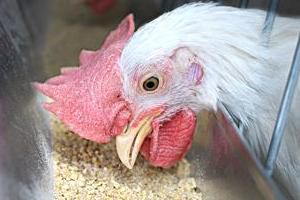Achieving optimal use of xylanase in corn-based diets

Consistency and dose hold the key to unlocking the full potential from xylanase use in corn-based diets, according to the latest findings from AB Vista.
Both are much more important than previously realised, and are critical to achieving reliable improvements in nutrient digestibility when feeding non-viscous diets.
“We now know that performance benefits from xylanase use in corn-based diets rely heavily on the production of specific prebiotic arabinoxylo-oligosaccharides (AXOS),” explains Dr Usama Aftab, AB Vista’s Poultry Technical Manager. “Achieving the right mix of AXOS when plant arabinoxylans are broken down by the enzyme is critical to the response seen within the animal.”
Recently uncovered mechanisms by which xylanases deliver improved nutrient digestibility in non-viscous diets show a direct link between certain prebiotic AXOS and increased stomach retention time, improved digestibility of the whole diet and proliferation of beneficial gut microflora.
“The key to achieving this effect is to consistently deliver an accurate dose of a correctly targeted active xylanase to the site of action – the stomach and small intestine,” Dr Aftab continues. “For example, overdosing risks breaking down the prebiotic AXOS, as well as potentially increasing the production of detrimental free arabinose and xylose.”
Including additional non-starch polysaccharide-degrading enzyme activities alongside the xylanase can have a similar negative impact, Dr Aftab claims. Just as critically, under-dosing will deliver insufficient activity to produce the desired effect.
“That is why it is so important not only to select a xylanase which has been proven to be effective in delivering a prebiotic AXOS effect,” he adds, “but also to choose one which can be quickly and easily assayed to check consistency of dose after any high temperature feed processing has taken place.”













